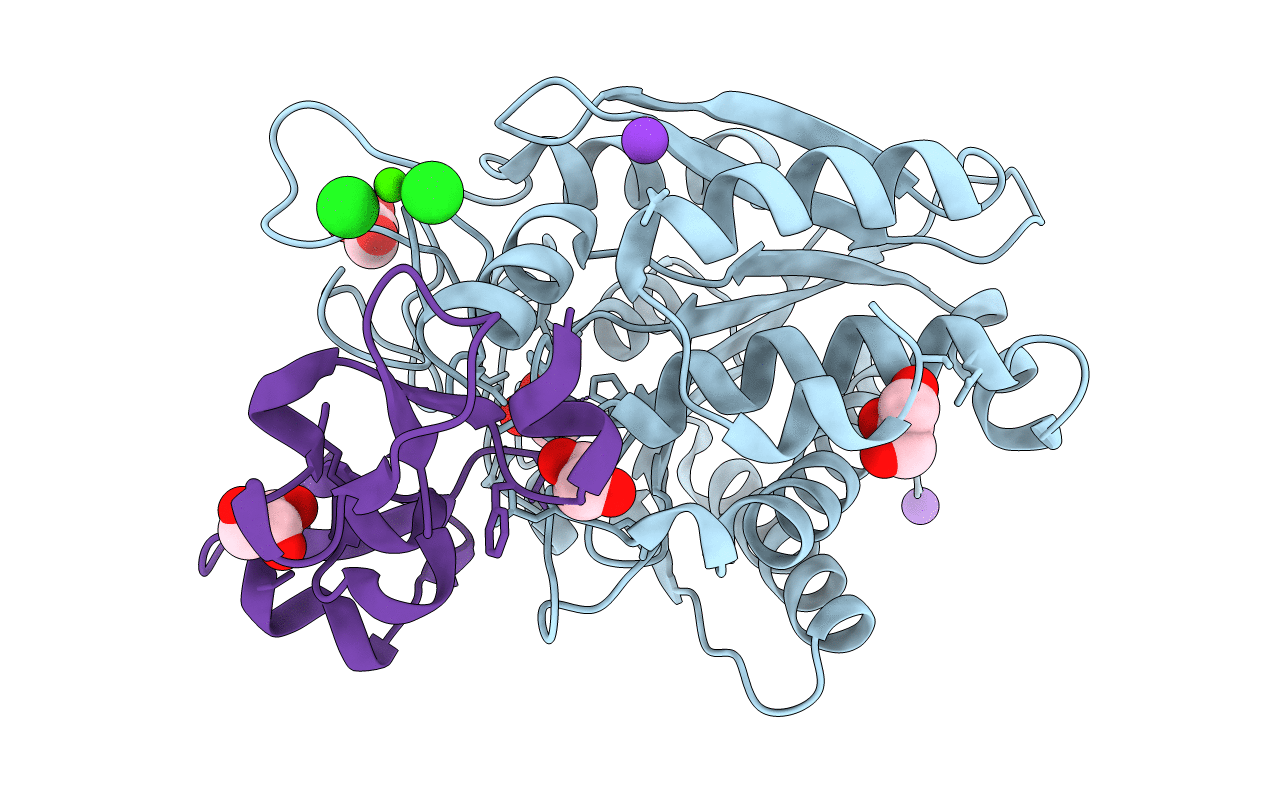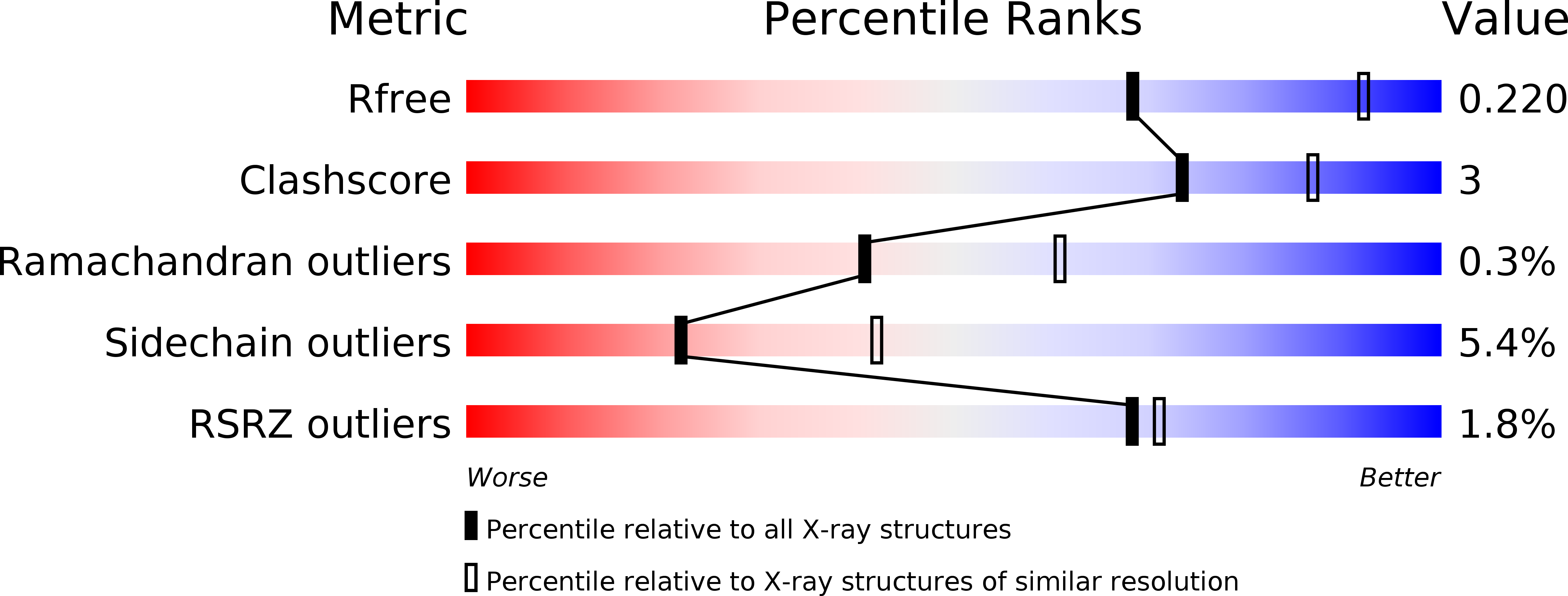
Deposition Date
2010-02-01
Release Date
2010-02-16
Last Version Date
2024-11-13
Entry Detail
PDB ID:
3LMS
Keywords:
Title:
Structure of human activated thrombin-activatable fibrinolysis inhibitor, TAFIa, in complex with tick-derived funnelin inhibitor, TCI.
Biological Source:
Source Organism:
Rhipicephalus bursa (Taxon ID: 67831)
Homo sapiens (Taxon ID: 9606)
Homo sapiens (Taxon ID: 9606)
Host Organism:
Method Details:
Experimental Method:
Resolution:
2.50 Å
R-Value Free:
0.21
R-Value Work:
0.18
R-Value Observed:
0.18
Space Group:
P 31 2 1


